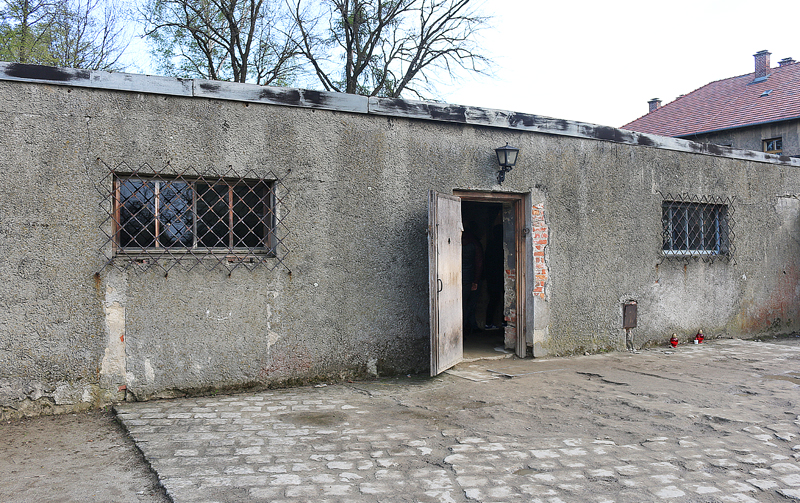Not counting its annexes and 45 satellite camps, the original site of Auschwitz near the town of Oświęcim in Poland is one of the few places on Earth where the horror of what happened during World War II was felt from perimeter to perimeter. Of the 1.3 million people sent to this concentration camp, at least 1,100,000 — the number is displayed in full purposely — people died; and approximately 90 percent of those people were murdered simply because they had the unmitigated audacity to be Jewish.
Gas Chamber I and Incinerator Room at Auschwitz
WARNING: Before continuing to read this article, please be forewarned that the article contains subject matter which may not be suitable to all audiences. Reader discretion is advised.

I had already wandered around both main parts of the Auschwitz-Birkenau concentration camp — a shuttle bus continuously takes passengers back and forth between what were once known as Stammlager and Vernichtungslager Birkenau at no extra charge — and the final part of my visit was the building which housed the gas chamber on the northern tip of the original Auschwitz.

The small windows on the nondescript building were covered with an iron grating which has rusted over the years.

A closer view of one of those windows gives little clue to the horrors which once occurred inside this building — save for that aforementioned rusted grating.

After I walked through the open door, which had a peephole built into it…

…I looked out that same window from the inside and noticed two people hugging each other in an act of comfort to compose themselves after viewing what they saw inside of this building.

Cracked concrete ceilings aided in hiding the secret of the atrocities which were committed for years within the building.

This small room near the entrance was a storage room for spare gratings.
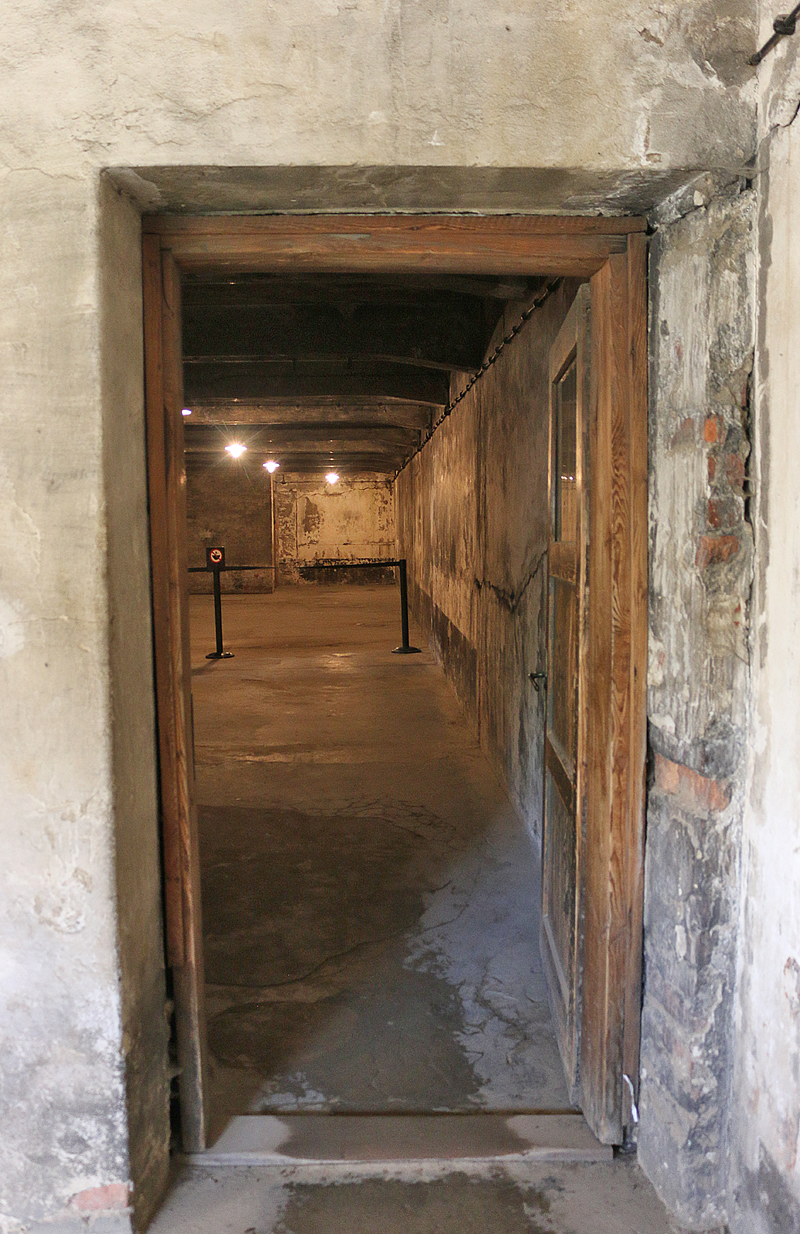
Just beyond this door was once both a washroom and a room which was used to store the ashes of incinerated corpses. A wall once blocked the view to the rear of this chamber, which was the actual gas chamber and morgue.
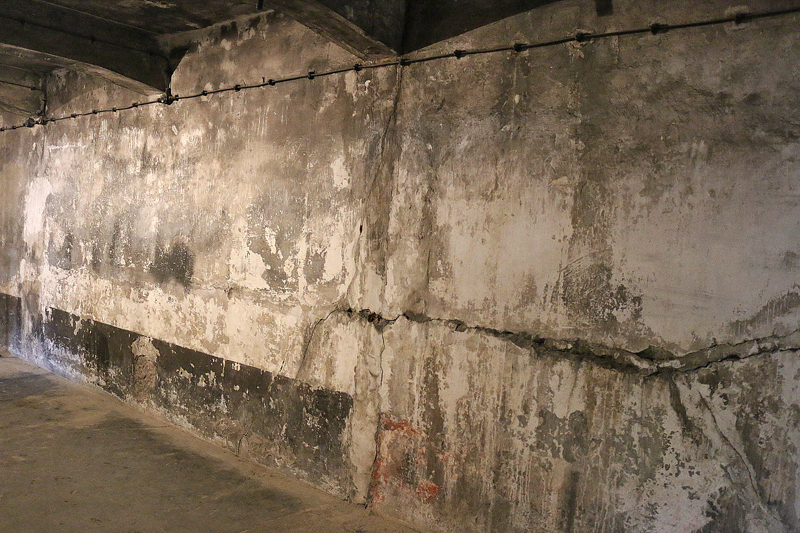
If only these walls — tired and broken — could talk…

Lethal gas was created by exposing Zyklon B pellets — which were dropped into what unsuspecting victims may have believed were shower facilities — to air. Some remnants of objects such as pipes and electrical conduits still remain in this closer view of the actual gas chamber.

Up to as many as 6,000 Jewish people were killed per day at Auschwitz by being gassed.
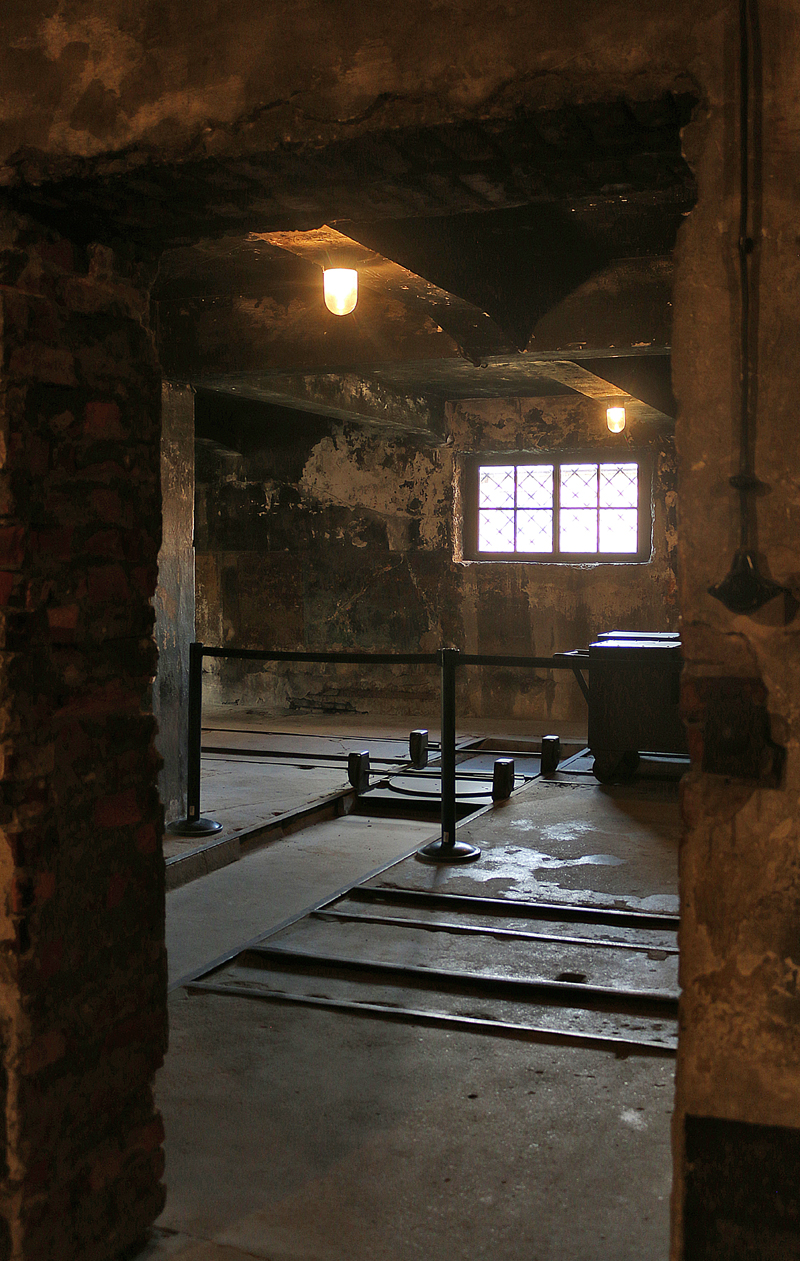
This doorway leads from the gas chamber to the incineration area.
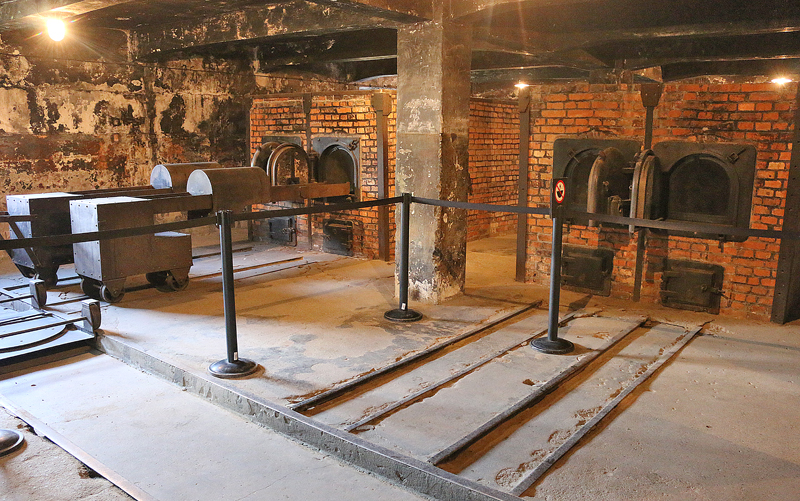
Four brick ovens were used to incinerate the dead bodies.

Wheeled carts on tracks attached to large metal rails were used to efficiently insert the dead bodies into the ovens.

This metal device on rails was used to transport the carts to their respective ovens.
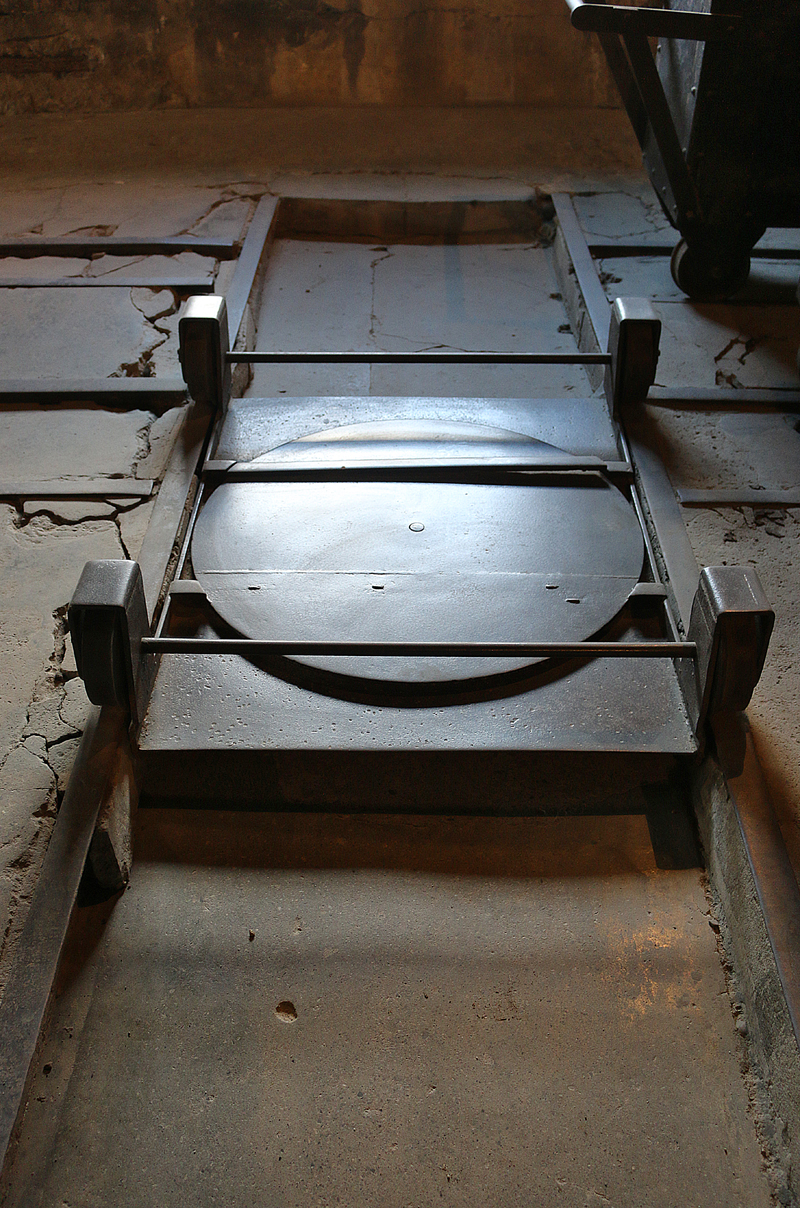
A closer look reveals that one rail is missing from the top of this device, on which a wheel was used to rotate the carts at 90 degree angles to turn them from one track to another.

To think of how much meticulous thought and detail was invested in the design of this operation specifically to kill and incinerate thousands of bodies of innocent human beings is incredulous, mind-boggling, flabbergasting and beyond the scope of comprehension and reasoning.

The doors to the ovens in which each dead body was inserted were open, revealing a screen door; and underneath those doors are doors in which the fuel — coke, which was stored in a room behind the ovens adjacent to an office — was supplied.

A closer view of one of the oven doors shows the details of the construction of the oven — including the two latches used to seal the doors shut.

The ceilings over the oven areas probably darkened from years of soot collecting on them.
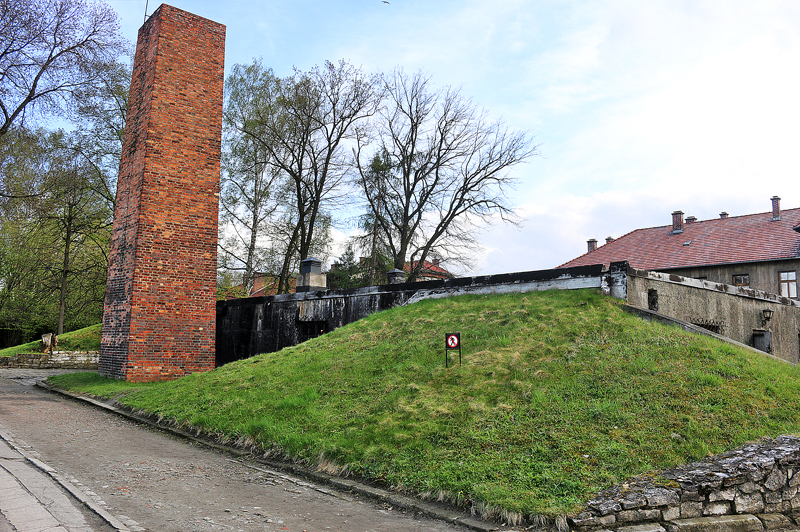
A grassy knoll helped to conceal the building which contained the gas chamber — but the chimney used to emit the smoke from the incinerated bodies is not exactly inconspicuous. This chimney was most likely the one through which the mother of a little girl — as told in a sad story by an elderly woman who survived the Holocaust — passed through in the form of smoke.
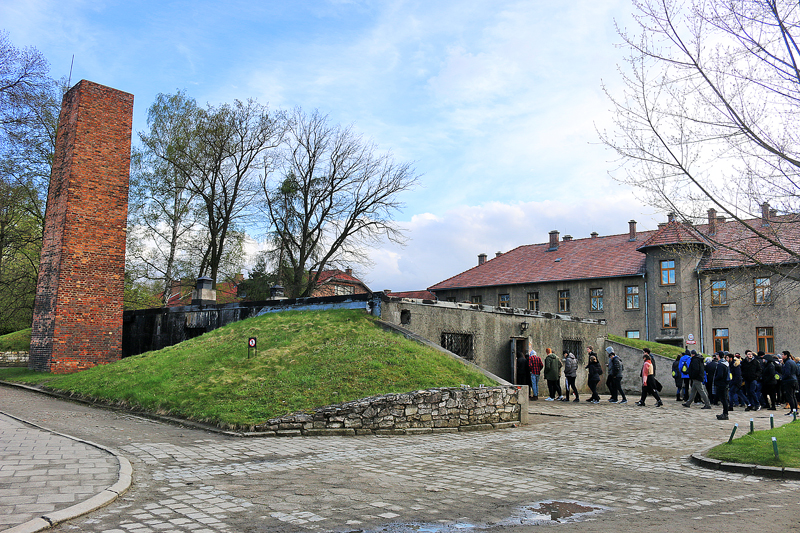
Visitors file into the building. When I was finished photographing the interior of the building, I stepped back into a corner where the ovens are located and simply watched visitor after visitor file past the ovens. Some had their hands over their mouths. Some gasped at the realization of just what happened in this building. Some had dismayed faces which revealed bitter pain. Some were furious and doing everything they could to control and contain their anger. Some openly wept. Others just quietly walked past, emotionless.
Not one person said a word.
Summary
I visited Auschwitz on the eve of Yom HaShoah — which is also known as Holocaust Remembrance Day— on Sunday, April 23, 2017; and plan to impart my experience through several articles in a loose series. This article pertains to the gas chamber and incinerator room, to which a politician visited and recorded on video — which led to controversy, for which he later apologized.
I also wrote a trip report pertaining to my visit to Dachau eleven years ago in two articles with photographs, split into part one and part two.
As difficult as is reading this subject matter — and even more so actually visiting the site — it is important to never forget; and wish for the day to come when people no longer commit such heinous and violent acts on fellow human beings.
All photographs ©2017 by Brian Cohen.
